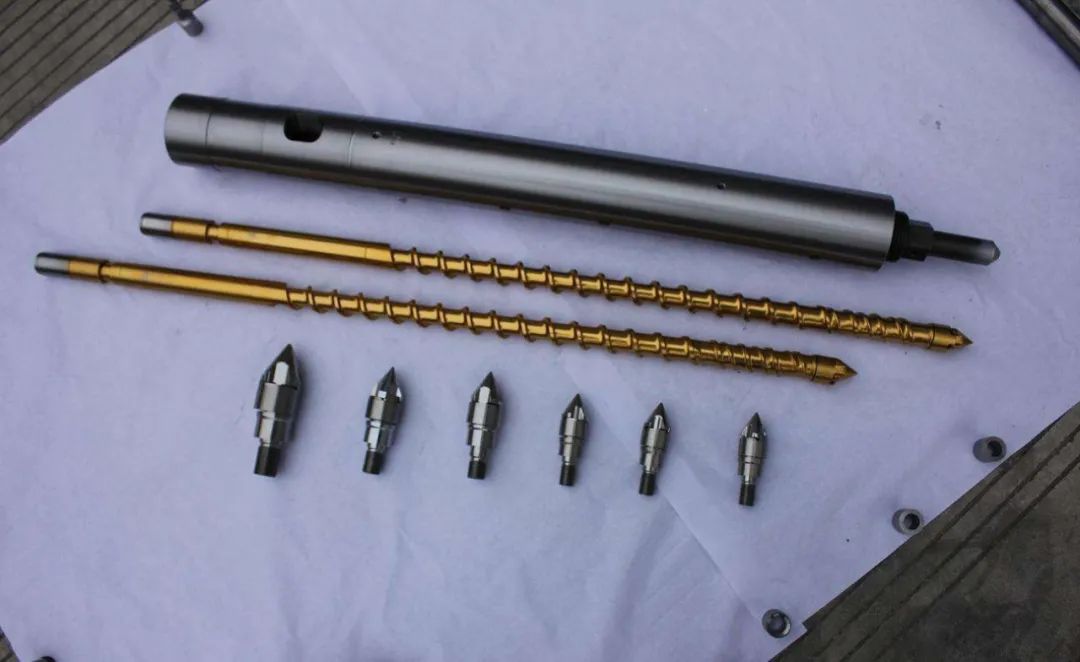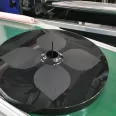
Screw slippage is one of most seen injection molding errors for an plastic injection molding manufacturer. So knowing what are the screw slippage reasons and treatment of injection molding machines is very important for every plastic injection moulding engineer and factory or workshop manager.
When the injection screw is difficult to press the material at the feeding port, or the length of the barrel cannot form enough adhesion to convey the material, then the screw will slip. In the stage of screw pre-molding, when the screw rotates in the barrel to convey the material along the direction of the screw and retreats to accumulate the material for the next injection, the screw will also slip. If the screw starts to slip during the pre-molding phase, the axial movement of the screw will stop while the screw continues to rotate. Usually the slippage of the screw will cause the material to degrade before injection molding, and there will be product quality problems such as short shots and extended processing cycle.
Therefore, the reasons for screw slippage are summarized, including: too high back pressure, overheating or overcooling in the second half of the barrel, wear of the barrel or screw, too shallow groove in the feeding section of the screw, improper design of the hopper, lack of material or blockage in the hopper, The resin is wet, the lubricant content in the resin is too high, the particle size of the material is too fine, and the resin used is not cut in a good shape or recycled.
1. Influence of injection molding process parameters
Low temperature in the back section of the barrel is usually the main reason for the slippage of the injection molding screw.
The barrel of the plastic injection molding machine is divided into three sections. At the rear of the feeding section, the material forms a thin layer of molten polymer during heating and compression. The molten film layer is attached to the barrel. Without this thin layer, the pellets are difficult to convey forward. The material in the feeding section must be heated to a critical temperature in order to produce the critical molten film layer. Often, however, the residence time of the material in the barrel is too short for the polymer to reach this temperature. The occurrence of this situation may be due to the small scale of the equipment and the corresponding configuration of smaller barrels and screws. Too short a residence time can lead to insufficient melting or mixing of the polymer, which can cause the screw to slip or stall.
2 simple solutions are proposed for this problem:
a). Add a small amount of material from the end of the barrel for cleaning, and check the melting temperature. If the residence time is short, the melt temperature will be lower than the barrel temperature set point.
b). Observe the molded product. If there are marble spots, black spots or light stripes, it means that the material has not been well mixed in the barrel.
And, according to the usage situation, another solution to the screw slippage is analyzed, and the temperature of the feeding section is gradually increased until the screw rotation and retreat are coordinated. Sometimes it is necessary to increase the barrel temperature above the recommended set point to achieve this range. Setting too high a back pressure can also cause the screw to stall or slip. Increasing the back pressure setting also increases the energy going into the material. If the back pressure is set too high, then the screw may not be able to generate enough pressure to convey the melt forward to overcome the back pressure of the back pressure, and the screw will rotate at a certain position without going back, which will do more to the melt The work and significantly increase the melt temperature, thereby adversely affecting product quality and cycle time. The back pressure applied to the melt can be adjusted by the control valve on the injection barrel.
2. The impact of equipment
If the cause of screw slippage is due to processing equipment rather than process parameters, then screw and barrel wear is likely to be the problem.
As in the feed section, the resin adheres to the barrel wall as it melts in the screw compression section. When the screw rotates, the material leaves the barrel wall after being sheared and conveyed forward. If there are wear areas on the screw and barrel, the screw will not be able to move material forward effectively. If wear is suspected, the screw and barrel should be inspected and the clearance between the two checked. If the fit gap between the screw and the barrel exceeds the standard value, replacement or repair work should be started.
The design parameters of the screw, especially the compression ratio (the depth of the feeding section to the depth of the homogenizing section) play a crucial role in the uniformity of plasticization. A feed section that is too shallow (resulting in a lower compression ratio) will reduce production and cause screw slippage due to underfeeding. Suppliers of various resins generally have recommended optimal compression ratios for injection molding materials. Failure of the non-return ring (one-way valve) can also cause the screw to slip. When the screw is rotating and plasticizing the material, the non-return ring should be in the front (open) position, contacting the retaining ring seat. If the non-return ring is in the rearward (closed) position, or in a position between forward and rearward, the molten polymer will resist passing through the gap between the non-return ring and the ring seat. If you suspect that there is a problem with the non-return ring, it should be replaced immediately.
Note: Because of the different plastic raw materials, the compression ratio is different.
The resin feed hopper can also be the cause of slippage in many injection molding screws. Proper hopper design is key to ensuring consistent material delivery, but is often overlooked. Generally speaking, new pellets of uniform size work well in square hoppers (sudden narrowing at the bottom) with abrupt compression zones. However, this is not the case when regenerative feed is added. The shape and size of the re-grinded pellets are very inconsistent, which will affect the uniformity of the feed. Feed incoherence means that the screw cannot maintain uniform delivery pressure on the melt, resulting in slippage. To solve this problem, and to resolve the size difference between regrind and virgin pellets, try using a round hopper involving a gentle compression zone with a gentle gradient at the bottom.
3. Material uniformity
As mentioned above, the shape and size of the material particles will affect the consistency of the feed. Poor pellet shape can cause poor screw processability, output fluctuations, and screw slippage. The pellets with uniform shape can be packed together more closely in the feeding section of the screw. The closer the pellets are packed together in the screw, the more time the material has to melt and move forward in the screw. Poorly shaped pellets will have more free volume (lower bulk density or more vacuum space between pellets) and feed difficulties, causing screw slippage. Raising the temperature of the rear section of the barrel can make the material start to melt faster, and the melt flow can obtain greater compressibility.
When processing hygroscopic materials such as nylon, moisture can also cause the screw to slip. Improper material drying will significantly reduce the viscosity of the material in the barrel and generate water vapor, making it difficult for the screw to convey the material forward. The moisture content of the pellets should be measured with a hygrometer at the bottom of the drying hopper and compared to the readings recommended by the material supplier.
Above are the screw slippage reasons and treatment for your reference. Please feel free to contact us if you still have and questions or need any help on this topic.
